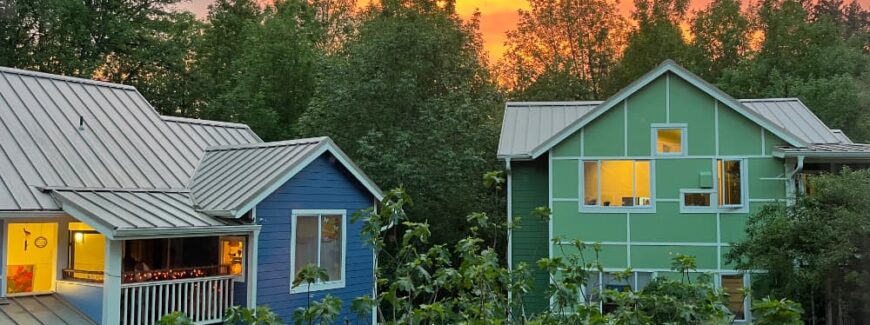Cohousing is an intentional community of private homes clustered around shared space. Each attached or single family home has traditional amenities, including a private kitchen. Shared spaces typically feature a common house, which may include a large kitchen and dining area, laundry, and recreational spaces. Shared outdoor space may include parking, walkways, open space, and gardens. Neighbors also share resources like tools and lawnmowers.
Households have independent incomes and private lives, but neighbors collaboratively plan and manage community activities and shared spaces. The legal structure is typically a Condo Association, or Housing Cooperative. Community activities feature regularly-scheduled shared meals, meetings, and work party days. Neighbors gather for parties, games, movies, or other events. Cohousing makes it easy to form clubs, organize child and elder care, and carpool.
Common Characteristics
Relationships
- Neighbors commit to being part of a community for everyone’s mutual benefit.
- Cohousing cultivates a culture of sharing and caring.
- Design features and neighborhood size (typically 20-40 homes) promote frequent interaction and close relationships.
Balancing Privacy and Community
- Cohousing neighborhoods are designed for privacy as well as community.
- Residents balance privacy and community by choosing their own level of engagement.
Participation
- Decision making is participatory and often based on consensus (as is Cascadia).
- Self-management empowers residents, builds community, and saves money.
Shared Values
- Cohousing communities support residents in actualizing shared values.
- Cohousing communities typically adopt green approaches to living.
